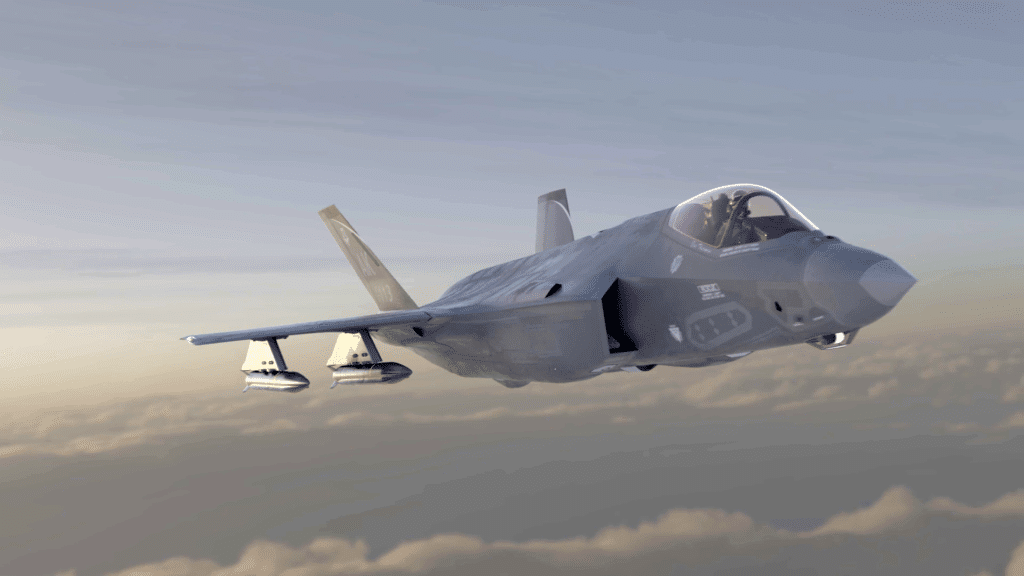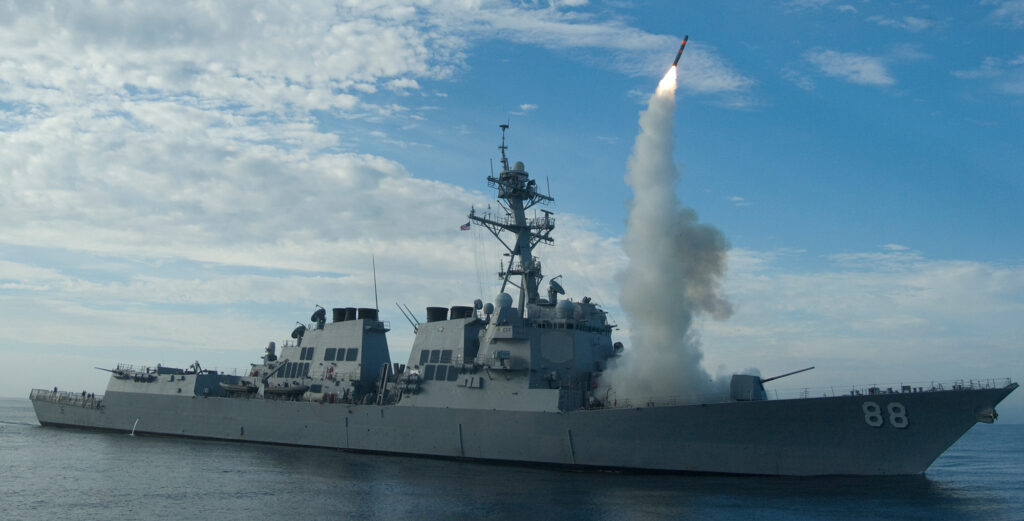Editor’s Note: This article has been updated to remove a reference to the F-22 being able to carry the Mako mission internally.
Last week, Lockheed Martin unveiled Mako, the world’s first air-launched hypersonic missile designed to be carried internally by stealth fighters the F-35. This could be the single most significant development in hypersonic weapons technology since the first Russian and Chinese hypersonic weapons entered service – provided the U.S. Navy opts to put it into production.
This potentially game-changing missile was revealed at the Sea Air Space 2024 event last week, and was first reported on by NavalNews.
Modern hypersonic missiles are defined by their ability to maneuver while traveling at sustained speeds in excess of Mach 5. This is an important distinction from other high-speed weapons, like ballistic missiles, which can travel at speeds above Mach 20, but are considered easier to intercept due to the predictability of their ballistic flight paths.
Sandboxx News sources at Lockheed Martin confirmed that Mako is indeed a maneuvering hypersonic weapon in an e-mail on Thursday.
“Mako does not travel in a pure arcing ballistic flight path. It is a true hypersonic weapon that operates and maneuvers in a high-altitude hypersonic regime,” Paul Sudlow from Lockheed Martin Missiles and Fire Control told Sandboxx News. “Its high speed and maneuverability enable it to penetrate advanced air-defense systems, engaging targets at or below hypersonic speeds, depending on mission requirements,” he added.
While details about this groundbreaking new weapon remain sparse, Lockheed Martin did reveal that its new Mako missile has been under development for the past seven years, drawing funding from the U.S. Air Force while competing for a production contract in the Stand-In Attack Weapon (SiAW) program.
That effort aimed to field an air-launched weapon meant specifically to counter elements of anti-access area denial defenses like air defense radar platforms, surface-to-air missile systems, and anti-ship missile launchers.
The SiAW contract was ultimately awarded to Northrop Grumman in September 2023 for a missile derived from the radar-hunting AGM-88G Advanced Anti-Radiation Guided Missile-Extended Range (AARGM-ER). Lockheed Martin’s Mako hypersonic missile that competed didn’t make the cut for the Air Force’s needs, potentially due to cost limitations, so now the firm is shopping the weapon to the U.S. Navy as a multi-mission strike asset capable of engaging both land and sea-based surface targets.
“For the U.S. Navy, this is a multi-mission, highly capable system, highly survivable, affordable, so you’re going to hold many targets at risk with one weapons system that’s ready now,” Rick Loy, Senior Program Manager at the company’s Missile and Fire Control division told Naval News.
The Mako missile’s complicated behind-the-scenes story
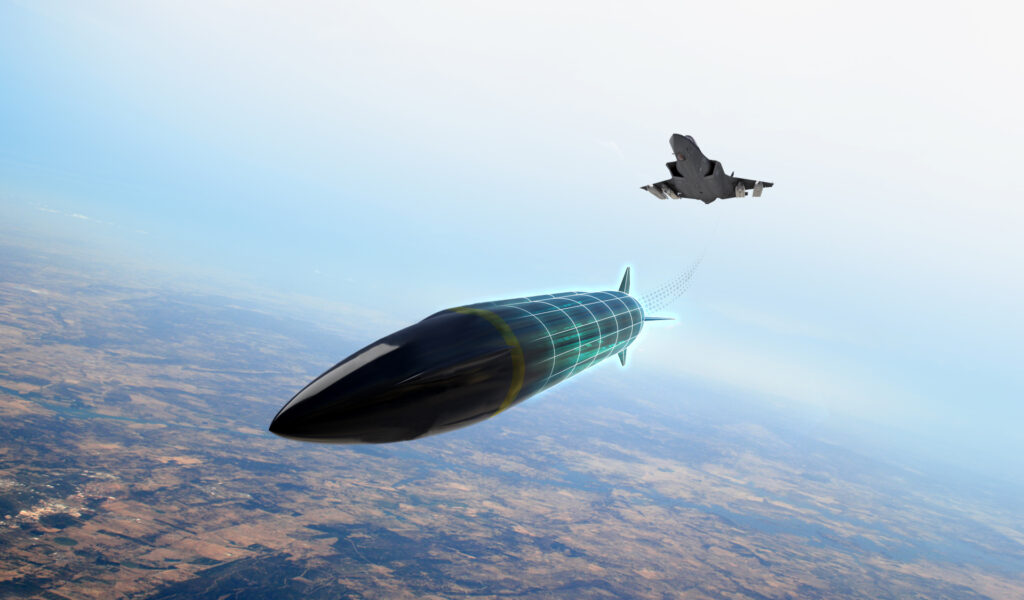
The Mako missile was developed under the auspices of the Air Force’s Stand-In Attack Weapon program, with a total of some $35 million awarded to Lockheed Martin in three seperate developmental contracts (associated with developmental phases 1.1, 1.2, and 1.3).
In a video clip released by Lockheed Martin in March 2022 (while this weapon was competing for the SiAW contract), an F-35 is shown launching not one… but six of these Mach 5+ weapons in short order – two from internal bays and four more from external hardpoints underwing.
The Mako was initially designed for carriage aboard the F-35A, but fits just as easily into the weapons bay of the F-35C for use aboard aircraft carriers. The short take-off, vertical landing F-35B, however, doesn’t have the internal storage space required to carry the weapon while maintaining a stealth profile, but could potentially carry these missiles underwing when stealth is not a priority.
Lockheed Martin has also explained that, while Mako is an air-launched weapon, it could easily be modified for surface, or even sub-surface applications. This would likely be done via the Mk 41 Vertical Launch System carried by U.S. Navy destroyers and cruisers (among a laundry list of other vessels around the world) similarly to Lockheed Martin’s AGM-158C Long Range Anti-Ship Missile that uses an MK-114 rocket booster to propel the weapon out of the vertical launch system cells.
Lockheed Martin partnered with Virginia-based Naval aviation systems firm Coaspire on Mako’s development. This may offer us a small bit of insight into the behind-the-scenes negotiations surrounding this missile’s intended transition from Air Force to Navy lines of accounting. There is only a single mention of the word “hypersonic” on the publicly-facing side of Coaspire’s website, which likely refers to Mako.
Currently, the website says only, “In Hypersonics, CoAspire is working with a major defense company on a high-TRL solution.”
High-TRL, in this context, means “High Technology-Readiness Level,” suggesting a weapon that is ready to move into realistic testing or maybe even production. This coincides with statements made by Lockheed Martin officials, who said the Mako missile is “ready to fly, ready now, and is ready to go in scale and into production quickly.”
Related: AI-piloted F-16 takes on human pilot in ‘complex dogfights’

However, CoAspire’s website was apparently updated in the past few days to remove a bit more context – seemingly in response to Mako’s reveal. Up until recently, the CoAspire website had a longer blurb about hypersonics that read as such: CoAspire “has a hypersonic missile solution accepted by the US Navy and placed in an Other Transaction Opportunity (OTA) basket – a contract vehicle, for future consideration by the service for funding.” The website went on to say that this “solution also leverages previous work by a major defense company.”
OTAs, or Other Transaction Agreements, refer to a streamlined acquisition process meant to supersede the typical Federal Acquisition Regulation (FAR)-based model of contracting. OTAs allow the military to rapidly acquire critical technologies and capabilities not already being pursued through publicly funded programs of record. Usually, Other Transaction Authority procurements go through smaller, non-traditional contractors.
The OTA “Basket” provision allows the military to take industry proposals that are deemed valuable, but don’t currently meet any formally-stated needs of the force, and are therefore not a funding priority. Programs that are approved for the “OTA Basket” can remain there for two years or more, where they can be adopted for modification by other ongoing programs; alternatively, they may see funding near the end of the fiscal year when “sweep up” funds (or leftover budget) becomes available; or may even see intentional allocation of funds in a following-year defense budget.
Put simply, the OTA basket is where the Navy can put good ideas that aren’t currently funded on hold for a year or two, rather than stopping the effort completely and having to start again down the road when funding surfaces.
This may provide some insight into the Mako missile’s capability set, as placing the weapon in the OTA Basket means it likely doesn’t meet the requirements necessary for the Navy’s still ongoing Hypersonic Air Launched Offensive Anti-Surface (HALO) missile program, which aims to equip the Navy’s Super Hornets with a long-distance anti-ship capability.
This likely is not due to speed. In April of last year, Naval Air Systems Command Rear Adm. Stephen Tedford explained that, despite the HALO moniker, it’s likely that this new weapon will not actually be hypersonic. The program’s focus, he explained, is strictly on efficacy, time, and distance – but with no hard requirements for speeds above Mach 5.
As such, it seems likely that Mako doesn’t fit the bill for HALO due to range limitations, as it’s probably more closely aligned with the shorter range requirements for the Air Force’s SiAW program, which was looking for a weapon in the 180-220 mile range.
“Mako defeats high-value and time-sensitive targets at operationally significant ranges. Its performance meets or exceeds all Stand-in Attack Weapon requirements,” Lockheed’s Sudlow explained.
This suggests Mako’s range is likely close to AGM-158C LRASM’s, another Lockheed Martin weapon designed for anti-ship duties that is considered the shorter-ranged precursor to the HALO effort.
Related: Dark Eagle is one of the US military’s most promising hypersonic programs
Mako was built for the SiAW job
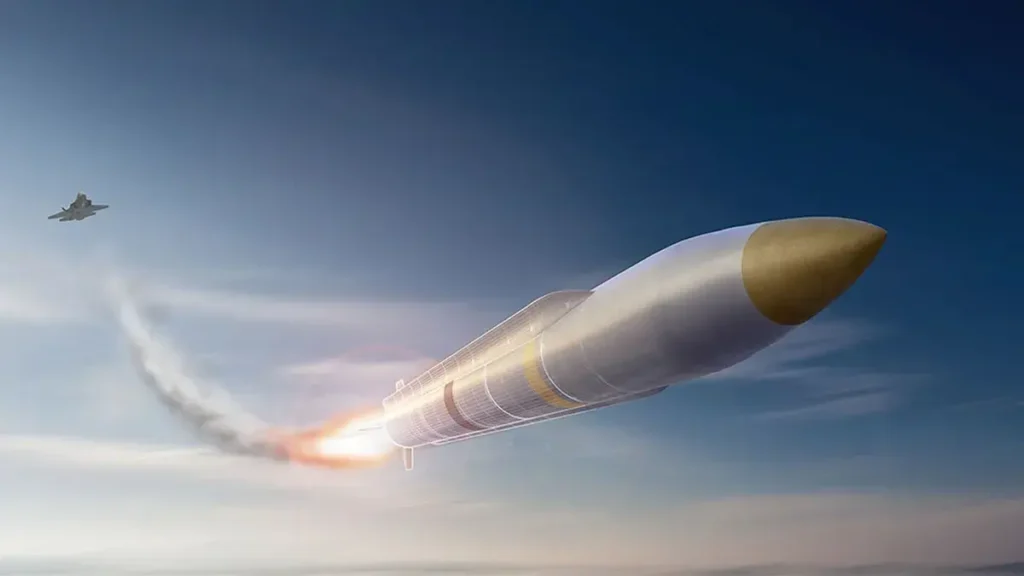
The Mako missile was developed with the sole purpose of engaging a wide variety of stationary and moving surface targets. In fact, the SiAW program has been characterized by some as an effort to field “one air-to-ground weapon to rule them all.”
This effort called for the use of an advanced multi-mode guidance system boasting a combination of seekers, including what will likely be an anti-radiation (radar hunting) seeker, GPS-assisted inertial navigation, and a millimeter-wave radar seeker.
This approach to weapon guidance will allow the SiAW to spot and hunt down targeting radar arrays, closing with their radar broadcast via the anti-radiation seeker. If the array is powered down, or even on the move, it can continue to close with it anyway, thanks to the SiAW’s onboard guidance and radar systems.
Lockheed Martin would not offer details regarding Mako’s guidance system, but it stands to reason that it will boast very similar, if not identical, capabilities. Lockheed Martin’s Rick Loy, senior program manager at the company’s Missile and Fire Control division, did confirm that the Mako has “multiple guidance methods” and “electronic packages.”
According to Loy, the weapon has already been physically fit tested on the F-35, and digitally tested aboard the F-22, F-16, F-15, F/A-18, and a Navy P-8 Poseidon to boot. In fact, the missile can be affixed to any aircraft with “30-inch lugs” on its weapons ejector rack – a fairly ubiquitous size across American aircraft, found among BRU-32, BRU-46/A, and BRU-47A carriage and release systems. Loy specifically cited the BRU-32, commonly found on U.S. Navy F/A-18 Super Hornets, as an example.
According to Lockheed Martin statements, Mako started development seven years ago, placing the program onset in 2017. This coincides with the earliest known discussions about the Air Force’s intent to field the Stand-In Attack Weapon, but predates what we generally consider to be the onset of the modern “hypersonic arms race,” which began with a speech delivered by Russian President Vladimir Putin on March 1, 2018.
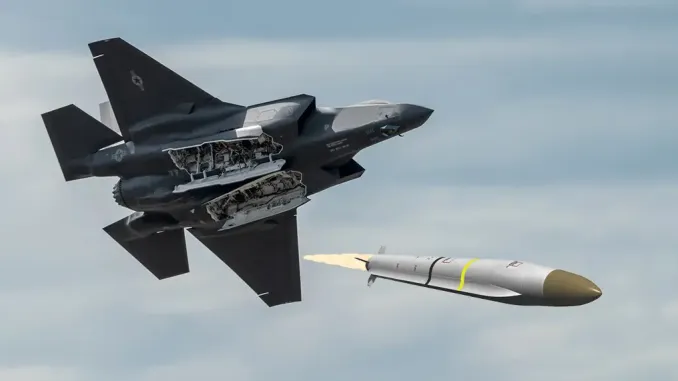
Hypersonic, as an adjective, may refer to anything traveling faster than Mach 5, but hypersonic as a weapons classification has much more rigorous requirements. All ballistic missiles, from Germany’s V-2 Rocket in World War II to Russia’s Kinzhal air-launched ballistic missile, achieve hypersonic speeds by flying along a fairly predictable arcing ballistic flight path. Modern hypersonic weapons, on the other hand, achieve similarly stunning speeds, but retain the ability to maneuver at those high speeds to a much larger degree than is possible with ballistic warheads. It’s this combination of speed and maneuverability that makes these weapons so difficult to intercept – not their speed alone.
In fact, in many instances, a ballistic missile will reach its target faster than a modern hypersonic missile will – as long as the ballistic missile isn’t intercepted along its way.
Mako’s ability to fly at hypersonic speeds while maneuvering makes this weapon unique compared to existing hypersonic weapons, which are generally categorized into one of two groups: Hypersonic Glide Vehicles and Hypersonic Cruise Missiles. Hypersonic Glide Vehicles (HGVs) can be seen as an extension of ballistic missile technology, though they seperate from their boosters at a lower altitude, before gliding toward their targets unpowered, but maneuver using control surfaces, chemical thrusters, or a combination of the two.
Hypersonic cruise missiles are powered by exotic air-breathing jet engines like ramjets or scramjets, and fly along more horizontal flight paths using lift – like an aircraft – to fly and maneuver. Mako does not appear to be either, achieving hypersonic speeds through sheer brute force, and likely maneuvering via tail-mounted control surfaces, or potentially due to some degree of thrust vectoring in the rocket nozzle.
But while that does set the Mako missile apart from existing hypersonics, what could make this weapon truly dangerous is its potential launch platform. A hypersonic missile already represents a massive challenge to intercept, but one that can be launched by stealth fighters operating practically anywhere takes an already extreme undertaking and could potentially render it all but impossible.
Related: America’s secret stealth aircraft you’ve never heard of
What are the implications of the Mako missile if it enters service?
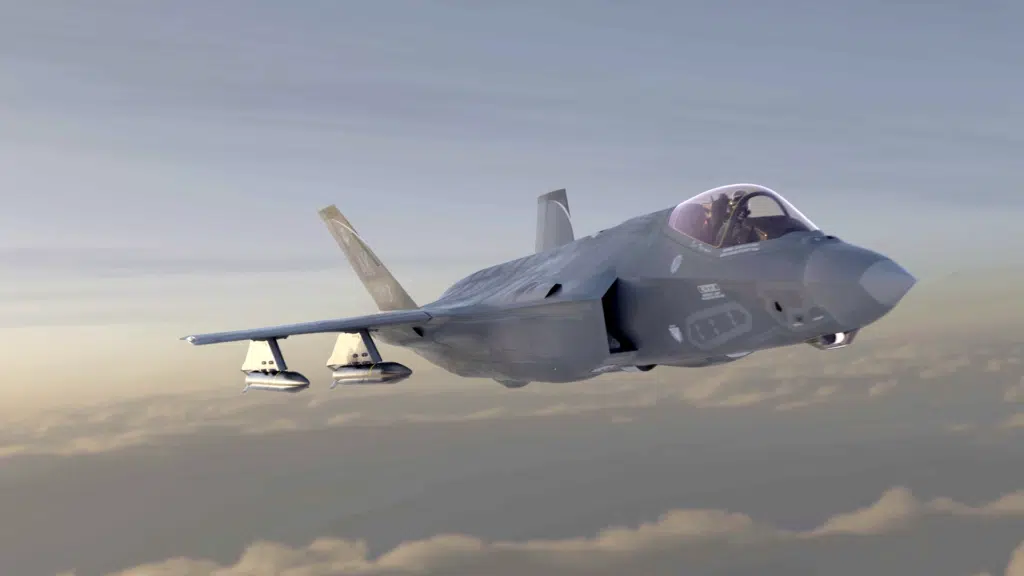
Hypersonic speeds are generally considered to start at around Mach 5, which (depending on altitude) is right around 3,863 miles per hour – meaning a weapon traveling just above the notional hypersonic barrier covers nearly 64 miles per minute, and greater than a jaw-dropping one mile per second.
That means the Mako missile, assuming it flies at Mach 5 or only slightly better, could cover the breadth of its estimated operational range of 200 miles in just over three minutes. At these speeds and distances, air defense assets would already face a massive challenge in calculating trajectory and launching an interceptor capable of engaging the missile before it closes with its target. That challenge becomes all but untenable when you consider that the launch itself could come from anywhere, because these weapons can be carried internally by the world’s most advanced stealth fighter.
Many of the details surrounding Mako’s hypersonic capabilities remain a mystery, but the truth is, how exactly this weapon compares to other hypersonic missile programs doesn’t really matter. What does matter, is what capabilities Mako could provide the U.S. Navy.
Fielding the first or even the fastest hypersonic missile will win a nation headlines and geopolitical prestige, but fielding the right weapon for a nation’s warfare doctrine and existing platforms, will win actual wars. What ultimately matters is not how any single weapon or system performs, but rather, how that system can be used alongside other weapons and systems.
This is why Russia’s hypersonic weapon known as Avangard is largely strategically meaningless: it’s designed to ferry nuclear warheads to American soil in the same way Russia’s existing ICBMs and SLBMs already can. In contrast, it’s also why China’s similar hypersonic weapon, the DF-ZF, represents such a threat: because it was designed to offer a new capability that complements China’s existing anti-ship arsenal.
But while both of these weapons are fired from land-based launchers that can only be found in certain geocraphical locations (making identifying a launch a somewhat easier enterprise) that won’t be the case for the Mako. The importance of this is hard to overstate, especially if the weapon comes with the SiAW’s initial projected cost of only a few million dollars per missile.
It is important to note, however, that this weapon is, so far, still more concept than munition. Lockheed Martin’s involvement in the SiAW effort concluded with Northrop Grumman being awarded a follow-on contract to begin building and testing real missiles, meaning Mako has not yet breached the digital barrier into the real world. So, while the design appears to be quite mature, it may not be a certainty.
And as such, whether or not the Mako Missile makes it into service for the U.S. Navy remains to be seen.
